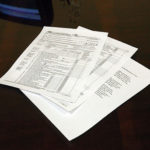The draft of a lien avoidance motion my paralegal presented me was garbled. Lien stripping concepts sat next to a cite to §522.
I doubt my staff is alone in missing the critical differences between lien stripping under (or despite) §1322 and lien avoidance pursuant to §522(f).
So let’s try some compare and contrast on liens we want to excise.
Avoid liens that impair exemptions
Section 522(f) enables the debtor to eliminate, in whole or in part, liens that impair an exemption to which the debtor is entitled.
With an small exception, it is only judicial liens that may be avoided. Tax liens are statutory, so they aren’t avoidable under § 522.
The exception to the rule confining avoidance to judicial liens is that for a nonpossessory, nonpurchase money lien on household goods, tools of the trade, or professionally prescribed health aids. This exception is drafted to extract the debtor from the tentacles of finance company loans where the lender took a security interest in everything the debtor owned, not because the collateral had value but because it was essential to the debtor.
Avoidance under §522 works in Chapter 7 and in Chapter 13.
Because the aim of the exercise is to see that the debtor gets the benefit of the available exemptions, a creditor with a judgment lien might find itself secured in part and avoided in part. Once the debtor gets the full exemption, if there is equity remaining to which the lien attaches, it survives.
Lien stripping in Chapter 13
What we call lien stripping is exploiting the §1322 workaround. Section 1322 prohibits the modification of a mortgage lien on the debtor’s principal residence. But if there is no equity whatsoever for the mortgage lien to attach to, most circuits permit the lien to be voided in Chapter 13.
So, here we’re eliminating a voluntary lien. It’s all or nothing: either there’s some value to support the lien or there isn’t. But see my post on settling disputes about value.
Up until recently, all circuits held that you could only strip voluntary liens in Chapter 13. Then came Mcneal in the 11th Circuit.
Then there’s 506
Section 506 is the utility player in Chapter 13. This section defines an secured claim. A claim is secured if there is value in the estate’s interest in an asset to which the lien can attach.
If there is no value for the lien to attach to, then it is not a secured claim and at the end of the Chapter 13, the lien is void.
For the purposes of §506, it doesn’t matter whether the lien is voluntary, statutory or judicial (so long as it isn’t a mortgage lien on a principal residence or a long term debt). It’s gone at plan completion.
Clearer?
Image courtesy of automania.









>Up until recently, all circuits held that you could only strip voluntary liens in Chapter 7<
Didn't you mean Chapter 13?
Sure did. You’re the first to catch the blunder!
So a completely unsecured judicial lien in Chapter 7? I’m thinking its a 506 issue.
Judicial lien can be avoided if it impairs an exemption.
What about completely unsecured judicial lien in Chapter 13?
Are Judgment Liens Avoidable in a Chapter 13 on non-residential properties?
You can value the lien, and if it has value, pay off the lien through the plan. If there is no value in the lien, it is voided at the end of the plan. You probably want to plan to record something at plan completion so subsequent title companies are assured the lien if void.
Yes, actually, it is clearer. Though I have a couple of practice questions. Where you’re paying off a partially secured judgment lien (reduced to nonexempt equity at confirmation hearing per 506), does Till interest apply or must you pay post-judgment interest at the state statutory rate?
Excellent, informative and succinct article! Thank you very kindly.